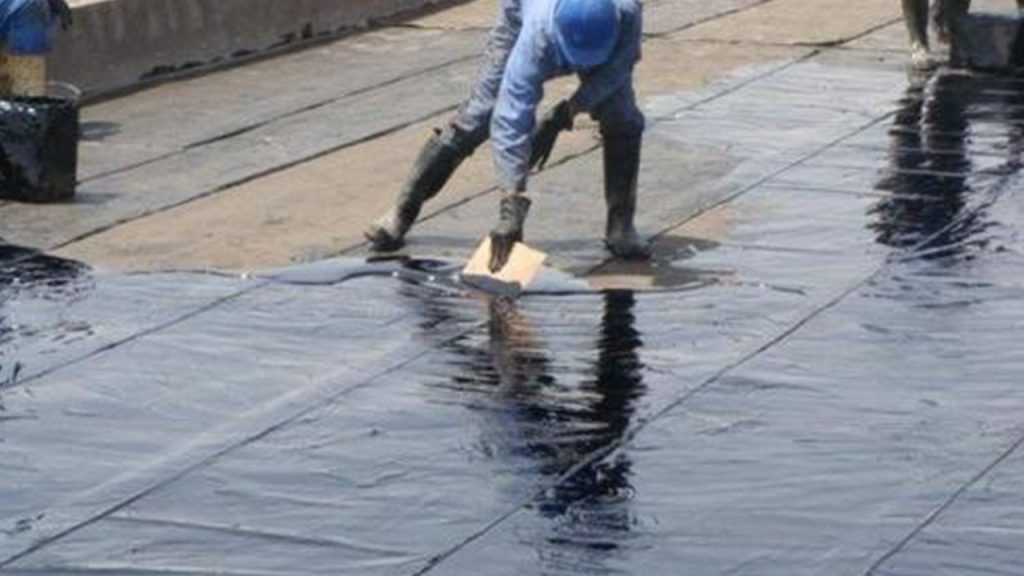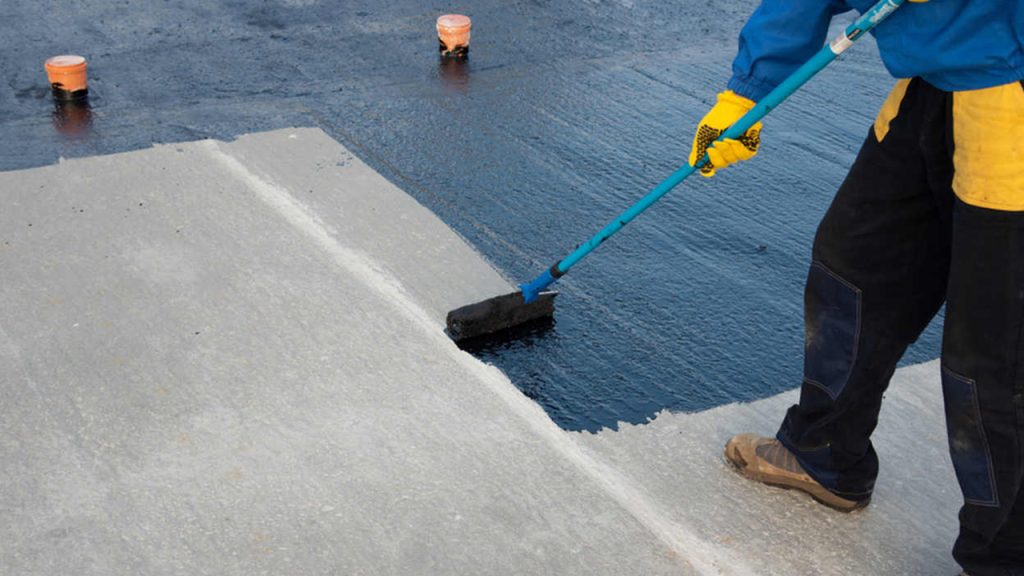Description
Waterproofing is the process of making an object or structure waterproof or water-resistant so that it remains relatively unaffected by water or resisting the ingress of water under specified conditions. Such items may be used in wet environments or underwater to specified depths.
Roofing materials are generally designed to be water-resistant and shed water from a sloping roof, but in some conditions, such as ice damming and on flat roofs, the roofing must be waterproof.
Many types of waterproof membrane systems are available, including felt paper or tar paper with asphalt or tar to make a built-up roof, other bituminous waterproofing, ethylene propylene dyne monomer EPDM rubber, hypalon, polyvinyl chloride, liquid roofing, and more.
Masonry walls are built with a damp-proof course to prevent rising damp, and the concrete in foundations needs to be damp-proofed or waterproofed with a liquid coating, basement waterproofing.


Features & Benefits
- It strengthens the structure.
- It prevents mould.
- It reduces maintenance costs.
- It provides a healthy environment.
- It increases property value.
- Increase energy efficiency.
- Increase longevity of structure.
Applicable Scope Area
The most common places water Proofing is used:
- Walk able flat roofs
- Pools, balconies and tanks.
- Underground walls.
- Facades
- Building exposed surfaces

Our Services
NON SHRINK GROUT
Non Shrink Grout is basically a free flow no shrink, high strength expansive grout. It is based on port land cement with…..
FLOOR HARDENER
Concrete Hardener is a Chemical Composition Which is used in Non Metallic Floor and Surface. It is a factory blended power…
MICRO CONCRETE
Micro-concrete is generally used as a repair material which is of non-shrinking type, It is cement based coating which can…
POLISHED CONCRETE
Polished concrete is a multi-step process where a concrete floor is mechanically ground, honed and polished with bonded……
PULYURETHANE FLOORING (PU)
A polyurethane coating (of urethane floor coating), is a highly flexible, highly abrasion-resistant floor coating that is….
SELF LEVELING EPOXY
Self-leveling Epoxy systems are combination of resin and hardener, When resin and hardener mix together, chemically react …
CAR PARKING FLOOR
Luxury is a part of our everyday life requirements. Constantly building, vehicles, and more, keeping pace with this need…..
ROAD MARKING PAINT
Road surface markxing is any kind of device or material that is used on a road surface in order to convey official ……….
ETP PROTECTIVE COATING
ETP (Effluent Treatment Plant) Protective Coating is a chemical barrier of concrete from the high voltage chemical ……….
PROTECTIVE COATING
A protective coating is a layer of material applied to the surface of another material with the intent of inhibiting or……
WATER PROOFING
Waterproofing is the process of making an object or structure waterproof or water-resistant so that it remains relatively….
HEAT PROOFING
Heat Proofing is a method by which surface of a property is treated with Heat Reflective chemical solution. These chemical…
SWIMMING POOL
Swimming pool, swimming bath, wading pool, paddling pool or simply pool is a structure esigned to hold water to enable…….
PLAYGROUND SOLUTION
A playground, play park, or play area is a place specifically designed to enable children to play there. itis typically……
CONCRETE FAIR FACE
Fair-faced concrete refers to concrete surfaces with special requirements in terms of concrete aesthetics and structure……
LACQUER POLISH
In modern techniques, lacquer Polish is used as clear or pigmented coatings that dry by solvent evaporation to produce a ….
EXPANTION JOINT
An expansion joint or movement joint is an assembly designed to hold parts together while safely absorbing temperature-……
FIRE INTRAMASIVE COATING
Fire retardant paint that will protect the structure of our building during a fire. This paint can be applied to steel ……
TERRAZZO FLOORING
Terrazzo flooring is composed of composite material. It contains any variety of mixture of aggregate chips like stone or…..
DECORATIVE/STAMPED CONCRETE
Stamped concrete also known as decorative con-crete is simply concrete that has a shape, pattern or specific design ………
SUSTAINABLE CONSTRUCTION RETROFITING
Retrofitting is the process of modifying something after it has been manufactured. Retrofitting a building involves ………
We'd Love To Hear From You
contact us

Thank you for your interest in ProTech Bangladesh, your trusted partner in construction chemical solutions. Whether you have questions about our products, need technical advice, or want to discuss a specific project, we're here to help.
Quick Links
Get In Touch
Suite-A2, Lift-02, Level-05, Plot-225, Century Center, Progati Sarani, East Gulshan, Dhaka-1212
- Email: mak.protechbd@gmail.com
- Phone: +8802 226600596
-
Call: +88016 1119 2148,
+880173792 0302
© 2025 All Rights Reserved.